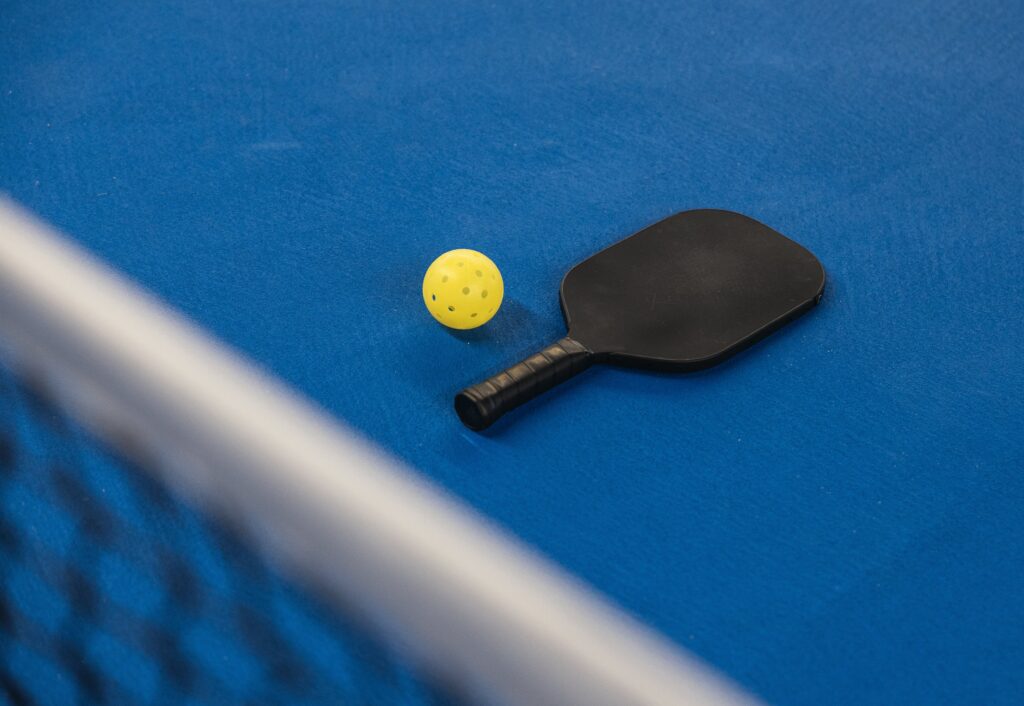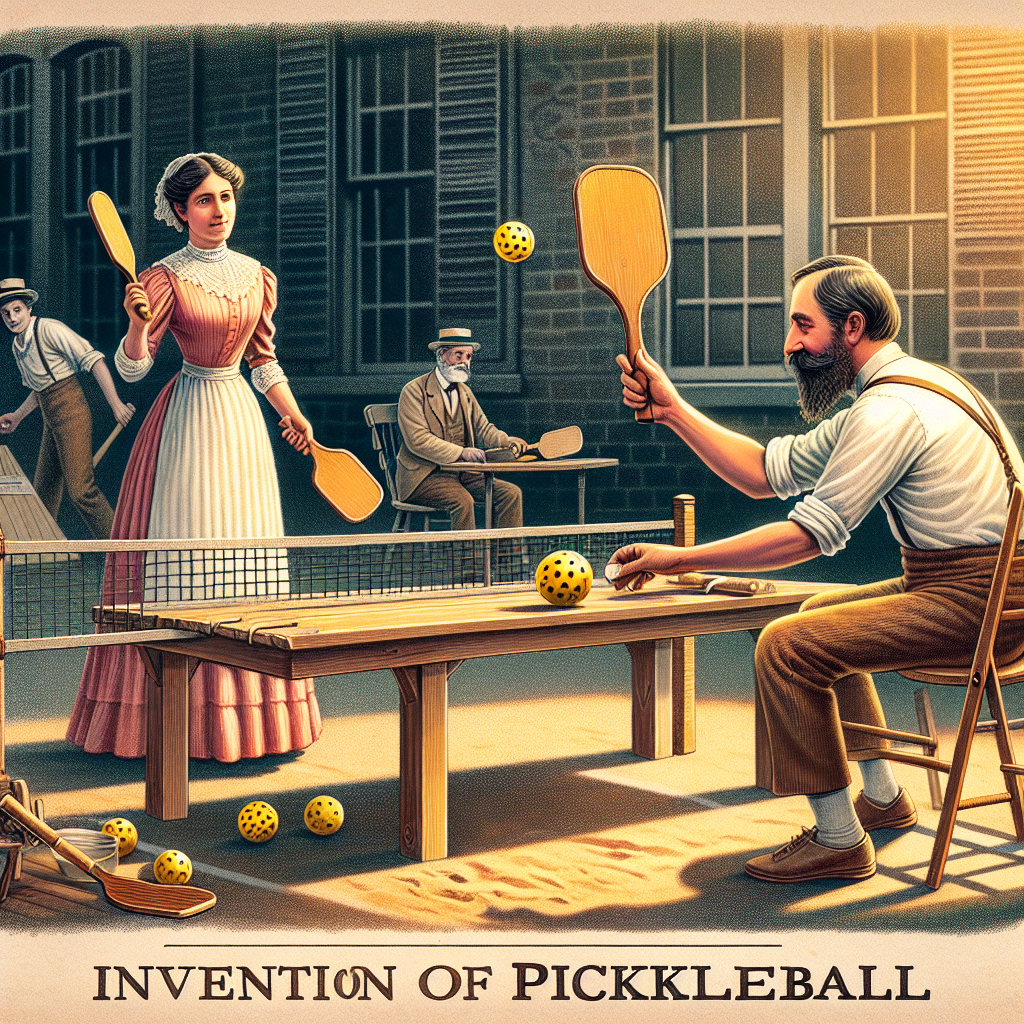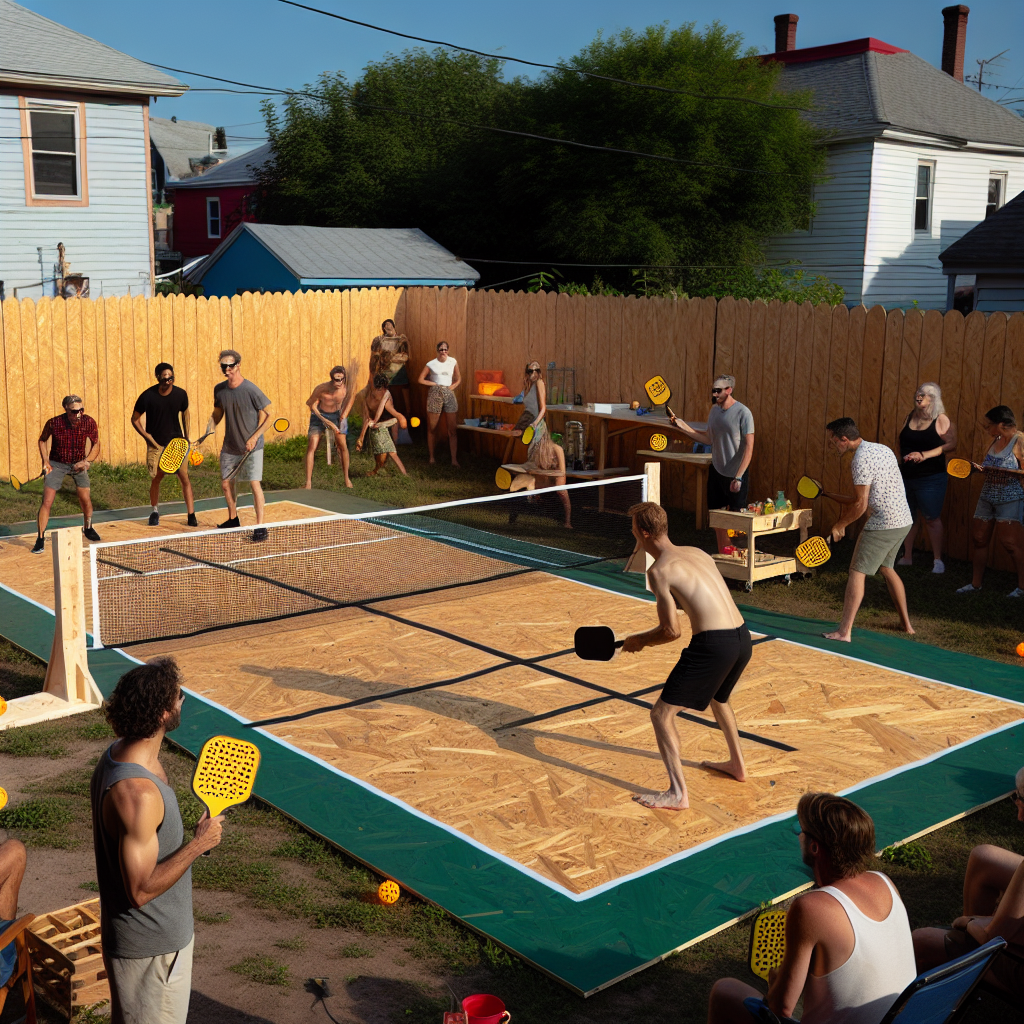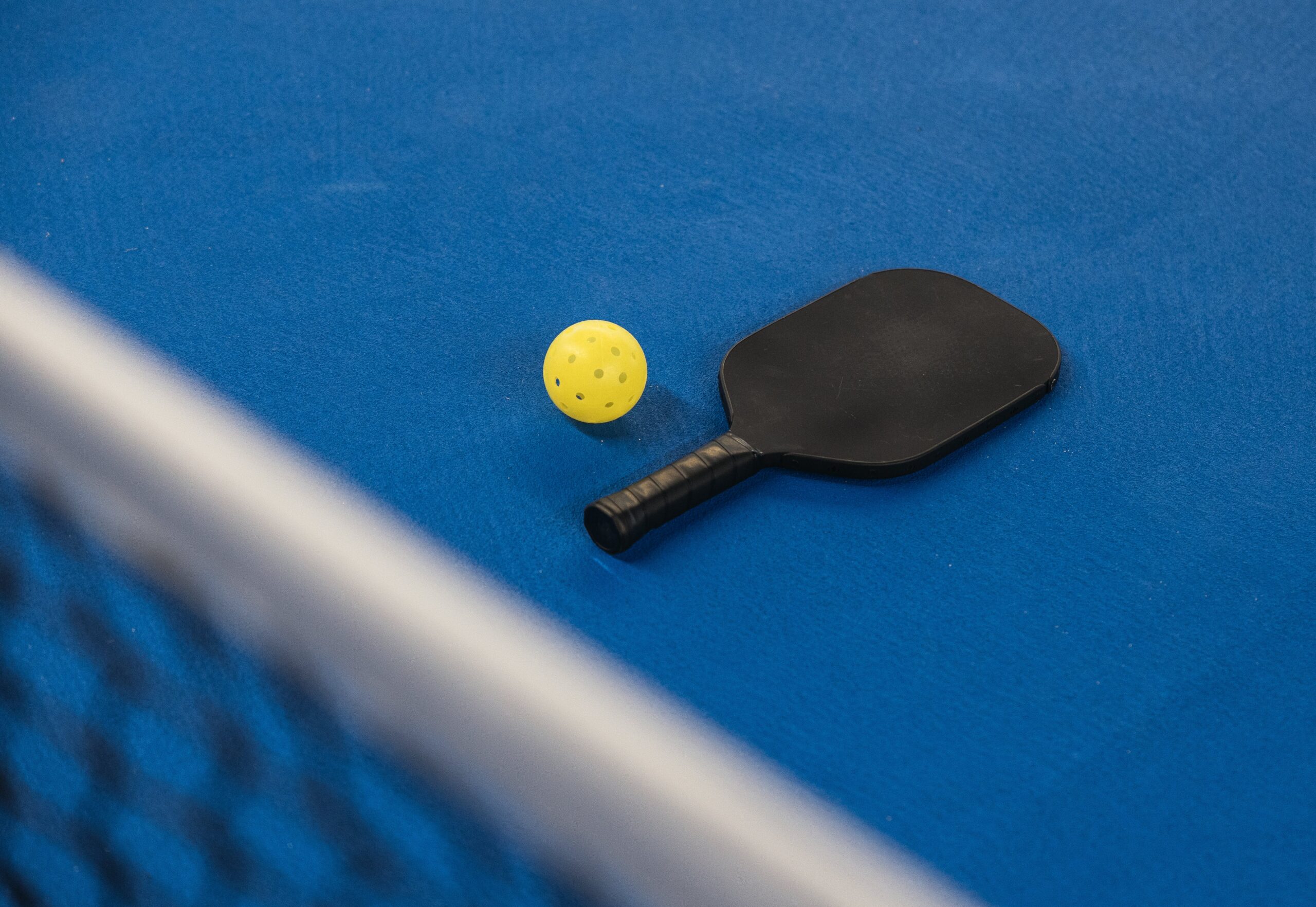Imagine a sport that combines the best elements of tennis, badminton, and ping pong – a game that offers both physical activity and strategic thinking. That’s exactly what you’ll find in the fascinating world of pickleball. But have you ever wondered why this unique sport was originally invented? The answer may surprise you. In this article, we will explore the intriguing origins of pickleball and uncover the story behind its creation, revealing a tale of ingenuity and a desire for fun. Get ready to unravel the mystery behind the birth of pickleball and gain a newfound appreciation for this popular pastime.
The Origins of Pickleball
Introduction to Pickleball
Welcome to the fascinating world of pickleball! This unique game has captivated the hearts of players all over the globe with its blend of athleticism, strategy, and sheer enjoyment. If you’re curious about how pickleball came to be, join us on a journey through its origins, key influences, and the remarkable rise it has seen in popularity.
Creation of the Game
Pickleball traces its roots back to 1965 when it was first created on Bainbridge Island, Washington. The originators of the game were Joel Pritchard, a congressman, and his friend Barney McCallum. Driven by the desire to find a new family-friendly activity, they set out to create a game that would keep everyone entertained and active.
Invention by Joel Pritchard
Joel Pritchard, with the help of his friends, came up with the initial rules and equipment for pickleball. They initially used a badminton court but soon found that the players were able to rally longer and have more fun using a lower net and a large plastic ball. The innovation and creativity of Joel Pritchard played a pivotal role in the birth of this exciting sport that we know and love today.
First Game
The first pickleball game was an impromptu affair, played in the backyard of Joel Pritchard’s home. The Pritchard family and their friends were the fortunate individuals to witness this historic moment. Little did they know that the game they were playing that day would eventually become an international sensation.
Origin of the Name
The origins of the name “pickleball” have sparked many theories and speculations. Some believe it was named after Joel Pritchard’s family dog, Pickles, who would often chase after stray balls. Others claim that it was named after a boat called “Pickleboat,” which was used to retrieve balls during the early days of the game. Regardless of the true origin, the name “pickleball” has become synonymous with this beloved sport.
Key Influences and Inspirations
Tennis
Tennis, a popular racquet sport, played a significant role in shaping the development of pickleball. Joel Pritchard and his friends were avid tennis players, and they incorporated elements of the game into their newly created sport. The smaller court size and the use of paddles instead of racquets were a direct influence from tennis, providing a familiar feel to those transitioning from the larger court sport.
Badminton
Another influential sport in the creation of pickleball was badminton. The use of a lower net and the initial choice of playing on a badminton court showcased the game’s origins rooted in badminton. These elements allowed for longer rallies and less demanding physical movements, making pickleball accessible to a wider range of individuals.
Ping Pong
Taking inspiration from the fast-paced and high-energy nature of ping pong, pickleball adopted some aspects of this popular indoor game as well. The dexterity required for quick reflexes and the ability to adapt to changing situations were some qualities that made ping pong an ideal inspiration for the development of pickleball.

Combining Elements of Existing Sports
Creating a Unique Game
By merging key features from tennis, badminton, and ping pong, Joel Pritchard and his friends succeeded in creating a game that was distinct and completely unique. Pickleball offered a new way to engage with a racquet sport while having its own set of rules and equipment.
Merging Key Features
Highlighting the best aspects of tennis, badminton, and ping pong, pickleball managed to strike the perfect balance between skill and accessibility. The lower net height made it easier for players of all ages and abilities to participate, while the use of paddles provided a different dynamic compared to traditional racquet sports.
Key Elements of Pickleball
Pickleball is played on a rectangular court with a net running across the middle. Players use solid paddles to hit a plastic ball over the net, aiming to land it within the opponent’s court. The game can be played as singles or doubles, increasing the diversity of play styles and strategies. These key elements form the foundation of pickleball and contribute to its appeal and broad appeal.
Filling a Gap in Leisure Sports
Demand for a New Game
In the 1960s, there was a growing demand for a leisure sport that could be enjoyed by people of all ages and skill levels. Joel Pritchard recognized this need, and pickleball was born as a response to this demand. It offered a fresh and exciting alternative to existing sports, giving people a chance to engage in a new form of recreation.
Accessible for All Ages
One of the remarkable qualities of pickleball is its accessibility. Players of all ages can join in the fun, whether they are young children developing their coordination or senior citizens looking for a low-impact activity. The slower-paced nature of the game allows for strategic play without requiring intense physical exertion, making it an ideal choice for people of varying fitness levels.
Differentiating from Existing Games
Pickleball carved its own niche in the world of leisure sports by combining the best elements of various sports while also introducing unique rules and techniques. Unlike tennis, which can be physically demanding, pickleball offers a more approachable experience. This differentiation allowed for a broader audience to engage in a racquet sport without feeling overwhelmed.

A Social and Family-Friendly Game
Suitable for All Skill Levels
Pickleball’s inclusive nature extends to all skill levels. Whether you’re a beginner or a seasoned player, there’s a place for you on the court. The game’s adaptability allows players to gradually develop their skills and improve over time while still having fun and enjoying the social aspect of the sport.
Promoting Bonding and Camaraderie
Pickleball’s emphasis on doubles play creates an atmosphere of companionship and teamwork. The collaborative nature of the game encourages players to communicate, strategize, and support their partners. This camaraderie extends beyond the court, fostering strong bonds among family members and friends who engage in this sport together.
Family-Friendly Aspects
Pickleball’s versatility as a family-friendly activity is one of its greatest strengths. It provides an opportunity for different generations to come together, share experiences, and create cherished memories. The rules and equipment are designed to be easily understood by all age groups, making pickleball an ideal choice for family outings and gatherings.
Outdoor and Indoor Adaptability
Outdoor Use
Pickleball can be enjoyed in various settings, but its popularity as an outdoor activity is a testament to its adaptability. Whether it’s played on dedicated outdoor pickleball courts, a modified tennis court, or even a backyard, the game lends itself well to the great outdoors. The larger court dimensions allow players to enjoy the fresh air and natural surroundings while engaging in friendly competition.
Indoor Use
When the weather doesn’t cooperate, or there’s a desire for year-round play, pickleball seamlessly transitions to indoor settings. Many sports facilities and community centers have embraced the game, providing dedicated pickleball courts for enthusiasts. The ability to play indoors ensures that pickleball can be enjoyed regardless of the weather conditions, making it a versatile and adaptable sport.
Versatility and Flexibility
By offering both indoor and outdoor play options, pickleball provides players with the flexibility to adapt to different environments and preferences. This versatility allows the game to thrive in diverse communities and climates, ensuring that pickleball enthusiasts can indulge in their passion regardless of the circumstances.

Rise in Popularity and Global Expansion
Growing Interest
Since its humble beginnings, pickleball has experienced an exponential growth in popularity. The easy-to-learn rules, accessibility for all ages, and inherently fun nature have attracted new players from all walks of life. As word spread about the joy and excitement of pickleball, communities and organizations across the globe began embracing the sport and creating opportunities for more people to pick up a paddle.
Increasing Player Base
What started as a backyard game quickly transformed into a global phenomenon. Today, millions of people actively play pickleball, and the number continues to grow steadily. The sport has become an integral part of recreational programs, physical education curriculums, and senior living communities, further fueling its widespread adoption and ensuring its thriving future.
International Recognition
Pickleball’s popularity has transcended borders, with international governing bodies recognizing it as a legitimate sport. Tournaments and competitions now take place at regional, national, and international levels, showcasing the skill and dedication of players from around the world. The global recognition reinforces pickleball’s status as a globally cherished game that continues to foster camaraderie and sportsmanship on a grand scale.
Health and Fitness Benefits
Low-Impact Exercise
Pickleball offers a fantastic opportunity to engage in low-impact exercise. The game’s slower pace and reduced physical demands make it an ideal choice for individuals looking for a workout without putting excessive strain on their joints. The gentle movements involved in pickleball promote cardiovascular health and overall well-being, making it a perfect choice for those seeking a more sustainable form of exercise.
Improving Cardiovascular Health
The combination of aerobic and anaerobic movements in pickleball provides a significant cardiovascular workout. The continuous movement, coupled with intermittent bursts of speed and agility, helps improve heart health, build stamina, and boost metabolism. Engaging in regular pickleball sessions can contribute to a healthier and more active lifestyle, positively impacting overall cardiovascular fitness.
Enhancing Coordination and Agility
Pickleball demands excellent hand-eye coordination, quick reflexes, and agile footwork. Regular play helps players develop and enhance these essential skills, contributing to improved overall coordination and agility. The constant need to react and adjust to the ball’s trajectory enhances spatial awareness and fine-tunes motor skills, making pickleball an excellent choice for individuals looking to enhance their physical abilities.

Competitive and Tournament Play
Competitive Levels
What started as a casual backyard game has grown into a competitive sport with various skill divisions. Pickleball offers opportunities for players of all abilities to compete against others at their own level. Skill rating systems ensure fair and competitive matches, allowing players to test their abilities and strive for improvement.
Rules and Regulations
Pickleball has a set of standardized rules and regulations that govern the game. These rules ensure fair play and consistency across tournaments and competitions, allowing players to compete on an even playing field. Familiarizing yourself with the rules adds to the enjoyment and competitive spirit of the game, ensuring a level of fairness and professionalism in tournament play.
Tournament Structure
Pickleball tournaments are organized events that bring together players from near and far to battle it out on the court. These tournaments feature various divisions based on skill levels and age groups, providing ample opportunities for players to showcase their abilities in a competitive setting. The tournament structure allows for camaraderie and sportsmanship to flourish, creating memorable experiences for participants and spectators alike.
Innovation and Evolution of Pickleball
Development of New Equipment
As pickleball’s popularity continues to soar, the sport’s equipment has seen significant advancements. Paddle technology has evolved, with manufacturers constantly refining their designs to maximize performance and comfort. From lightweight materials to innovative grip technology, the paddle market caters to the diverse needs and preferences of players, enhancing their overall experience on the court.
Rule Modifications
Over time, certain rule modifications have been introduced to accommodate the evolving nature of the game. These modifications aim to strike a balance between preserving the unique aspects of pickleball and addressing any emerging challenges or player preferences. Rule modifications ensure that pickleball continues to evolve without losing sight of its core principles and values.
Emerging Trends and Variations
As with any popular sport, pickleball has spawned various trends and adaptations. Some players enjoy playing with different ball types, experimenting with unique paddle designs, or even incorporating distinct techniques into their gameplay. These emerging trends and variations add a layer of excitement and experimentation to the sport, ensuring that pickleball remains dynamic and engaging for players of all levels.
In conclusion, the origins of pickleball can be traced back to the creative minds of individuals seeking a new and inclusive recreational activity. By merging elements from tennis, badminton, and ping pong, pickleball filled a gap in leisure sports and became a social, family-friendly game that promotes bonding, camaraderie, and overall well-being. Its adaptability for both outdoor and indoor play, alongside its rise in popularity and global expansion, has solidified pickleball as a beloved sport worldwide. From its low-impact exercise benefits to its competitive tournament play, pickleball continues to evolve and innovate, ensuring that players of all ages and skill levels can find joy and fulfillment on the pickleball court. So, grab a paddle, head to a court near you, and experience the excitement of pickleball firsthand!


